"Under the Maple Leaf, a new version of the perennial Canadian travel study by Hamilton H. Jones, ACL, is more beautiful and even more satisfying than its forerunners. Ineligible for current Ten Best, because of the fact that a small part of the present material has been viewed and listed in previous selections, the new release is included in the Honorable Mention category as a tribute to the dexterity with which the material, old and new, has been combined and the high quality of the added color sequences. The same flawless photography and clever sequencing which marked previous versions are again present. The disc sound accompaniment (in revised form) is deftly handled, making a thrilling addition to the film. Color is interspersed successfully with black and white sequences in a way that seems to obviate criticism of the mixture." Movie Makers, Dec. 1935, 553.
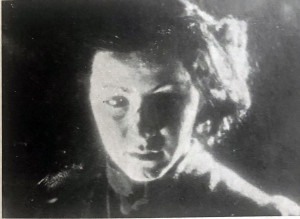
"a sogg. lungh. norm."/feature-length feature film
“Uno della Montagna è l’esaltazione della lotta dell’uomo contro la natura. La montagna (è questa la leggenda) colpisce con la morte tutti quelli che tentano conquistarla. A valle gli uomini e gli animali vivono nella più catastrofica miseria, mentre al di là della sommità vi è un “Alpe” intatto: è necessario trovarne il valico. Esso offrirà alle popolazioni affamate nuove e più fertili,. Due giovani animosi, attraverso non poche peripezie, tentano l’impresa ed uno di essi, più coraggioso e più generoso dell’altro, che abbandona il compagno in un momneto difficile, porta a termina la scalata fra l’esultanza dei valligiani. La vicenda è animata da una delicata storia d’amore.”
“One of the Mountain is the exaltation of the struggle of man against nature. The mountain (this is the legend) punish by death all those who attempt to conquer it. In the valley, men and animals live in the most catastrophic misery, while beyond the summit there is an intact “Refuge”: it is necessary to find the pass. It will offer new and more fertile land to the starving populations. Two courageous young men, through many vicissitudes, attempt the enterprise and one of them, more courageous and generous than the other, who abandons his companion in a difficult moment, completes the climb to the exultation of the valley dwellers. The episode is animated by a delicate love story."
—Notizario delle sezioni cinematografiche dei gruppi universitari fascisti a cura del ministero della cultura popolare, September 1938 p. 10
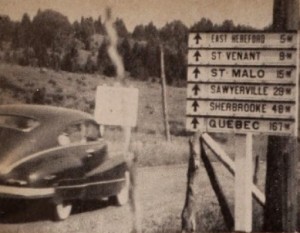
"'Vacation Highlights,' as the title implies, is a record of a vacation trip, but instead of the usual array of catch-as-can shots which make up so many vacation record films, Terry Manos has given this excellently photographed narrative substance by employing inserts of a letter to his wife and daughter, describing his trip, and a number of tie-in shots of the two to knit the whole into a pleasant continuity. The picture is remarkable, not so much from its narrative standpoint as for its consistency in exposure. There is not a measurable difference in exposure in any scene throughout the picture. The picture depicts the start of the trip by automobile, which takes the travelers across the U.S. border into Canada and thence through the province of Quebec. On the return trip they visit such interesting sights as a wood pulp mill and the famed Ausabel Chasm, in upper New York. The camera treatment of the pulpwood sequence and of the Chasm scenes definitely mark this filmer as a photographer of promise. Manos used a 16mm. Bolex camera and Kodachrome daylight type film." American Cinematographer, Apr. 1950, 134.
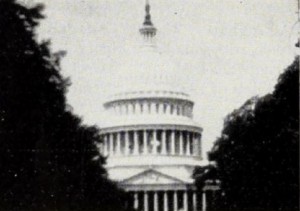
"Sometime during the summer of 1950, Fred Evans, L. A.'s genial maestro of 8mm movies, arranged to pick up a new Nash sedan in Grand Rapids, Mich. What better excuse need there be for packing up his two Southern California sons and taking them East to meet the land of their forefathers? Which is exactly what he did in Vacation Highlights of 1950. The lead title is commonplace, perhaps almost banteringly so; but the film footage which follows it is not. Niagara Falls, his native Vermont, Concord, Lexington, New York, Philadelphia and Washington are on the Evans itinerary of American history. There is a rewarding stop at the St. Louis zoo — for its incomparable Sunday shows — and soon the Evans are home again. But not without one final twist to the tale. "Hey, look-out here, Pop!" urges the oldest offspring as he returns from scouting the premises. The family cat, with inimitable feline pride and savoir faire has had kittens." Movie Makers, Dec. 1951, 410.
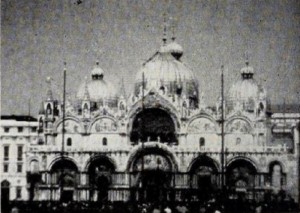
"Venezia, Pearl Of The Adriatic - Oscar Horovitz, in his recent world travels, gives us the benefit of his discerning eye with a studied and beautiful account on color film of the beauties of Venice, Italy. In this picture, he especially demonstrates his uncanny knack for searching out the most dramatic points of interest and for capturing them with his camera in such a manner that even without a running commentary, the picture has an unusual appeal. The secret, of course, is Horovitz's trick of following up his shots with more descriptive shots, in order to tell the complete story. Every sequence, no matter how brief or what the subject, is complete -sufficient. His compositions are artful, adding much to the interest of the picture. Considering that he spent two days in Venice, he has achieved a remarkable documentary of this beautiful and interesting city." American Cinematographer, May 1952, 224.
"Venice, with the misted Italian sun glowing softly on her mosaic domes and sparkling spires, is truly gem-like in her pearly beauty. And Oscar H. Horovitz has succeeded to an extraordinary measure in capturing the warm opalescence of this ancient capital. Such standard subjects as the Grand Canal and St. Mark's Square, in sequences of rewarding detail, have been blended in with less familiar scenes along the city's less famed waterways and few narrow streets. Such a detailed study belies the widespread belief that one must have unlimited time in which to do full justice to one's subject; Mr. Horovitz reportedly spent but two days here. However, his expert command of the technical elements of movie making, plus a pleasing sense of composition and eye for human interest, combine to make Venezia a memorable travel-film experience." Movie Makers, Dec. 1951, 410-411.
"Venice, another Kodacolor achievement by John V. Hansen, ACL, exemplifies in a new way the amazing versatility of the amateur color medium in the hands of a master craftsman. The significant accomplishment in this case is capturing the brilliant, yet delicate, Andrea del Sarto mosaics in the arched recesses above the doors of St. Marks in Venice. Although the sunlight does not strike these mosaics directly and lighting conditions for any type of photography are difficult, Mr. Hansen succeeded in registering the tones and colors, from the most subtle pastel shades to the brilliant yellow of metallic gold. This latter quality, so difficult to simulate in any medium other than the real thing, here is shown with the rich luster of the metal itself. Turneresque interpretations of Venice in another section of the reel are equally beautiful, if less obvious accomplishments, while studies of colors of buildings, as reflected in shimmering water, succeed in preserving what otherwise would be the most elusive memories of beauty. Mr. Hansen richly deserves the accolade of the Ten Best." Movie Makers, Dec. 1934, 534, 545-546.
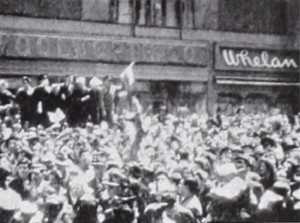
"How shall we film the almost unfilmable — when the world's greatest city goes mad with victory? How, even more, can we film it, when we lack the trucks and vantage points of the newsreel men? F. Clark Tufaro, in Victory Celebration, gives an outstanding and successful answer with his record of New York City's community frenzy, when Japan gave up. He goes from the heart of Times Square to Little Italy, Chinatown and other quarters, everywhere finding something interesting and something that he could actually film, in spite of pushing crowds. He adds fine footage of the welcome to General "Ike" and to General Wainwright and something of the celebration when Germany capitulated. With surprisingly good cinematography, in view of the difficulties. Mr. Tufaro's film is a miracle of persistence, patience and intelligence — and a thoroughly interesting movie." Movie Makers, Dec. 1945, 497.
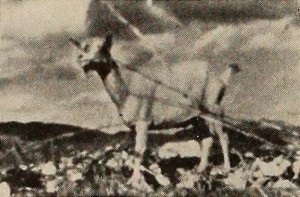
"Vida Pacoima, a two reel study of Mexican life in the southern California village of Pacoima, by Randolph B. Clardy, represents a near miracle in portraying a mood in motion pictures. Whether one likes (i.e., is entertained by) the film or not, there is no gainsaying the amazing emotional effect of its intelligent and beautiful cinematography. Here, in easy going and seemingly unstudied sequence, is the utter aimlessness of the slatternly village and its defeated people. Chickens and children, billy goats and black gowned old women, these are the life of Pacoima. Mr. Clardy has caught them all—either dreaming or drowsy in the sunshine—and presents them with a telling reiteration against the background of their broken homes and through the slats of their sagging fences. A sensuous delight, the photography is as nearly perfect as circumstances would permit, outstripped only by an unerring and often ineffable sense of motion picture continuity. In Vida Pacoima, Mr. Clardy is an artist to his finger tips and a movie maker down to the ground." Movie Makers, Dec. 1938, 617.
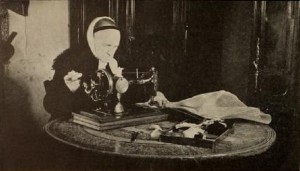
"Luc Fauvel is a Norman, and he turned to his own pays to contrive as sensitive and trenchant a study of French provincial life, in miniature, done by the medium of film, as did giants like Flaubert and de Maupassant through the medium of words. His Vieille France has irony, pathos, humor and plain reporting. It is the tale of an old bonnet maker of Normandy, who goes through her daily tasks, in which she has grown old, but who, at the end of the labor, reviews the past, by means of her photograph album, and meditates on her son, who died on the field of honor in the World War, and on her daughter who has become a great dancer and is far removed from the little Norman village of her origin. Mr. Fauvel accomplishes most by suggestion, by indirect statement and by a kind of insidious comment on life, never more than fleetingly presented. This young Frenchman, now studying at Cambridge, in England, will give us better and more technically well knit pictures as times goes on." Movie Makers, Dec. 1937, 630.
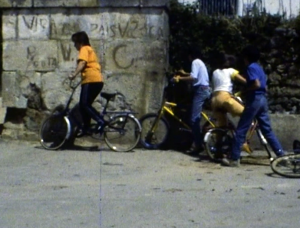
Documental corto sobre el pueblo de Villa de Corres. El filme comienza con varios paisajes de los alrededores y planos de montañas y el río. A continuación se muestra el pueblo, aparecen casas, el río, calles y algunas partes características como el Castillo, el hospital, la iglesia de San Esteban, el bebedero, la fuente , la plaza, etc. También aparecen algunas personas mayores y niños por las calles. Se comenta que es un pueblo con una población de 30 habitantes pero que es uno de los pueblos más longevos de la provincia de Álava.
Short documentary about a town called Villa de Corres. The film begins with several landscapes of the surroundings and shots of the mountains and the river. Then the film shows the town, houses, the river, streets, and some landmarks like the Castle, the hospital, the San Esteban church, the drink fountain, the fountain, the square, etc. Some older persons and children are also seen. It is said that the town only has a population of 30 persons, but that it is one of the longest-living towns in the Alava province.
Total Pages: 37